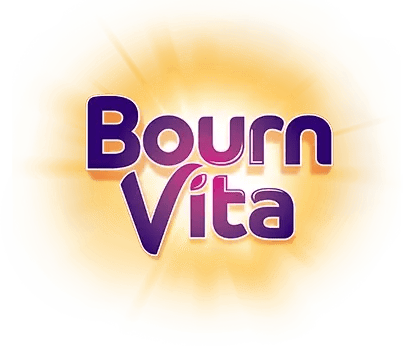- Banana
- Spinach
- Moong Dal
- Curd
- Guava
- Packaged Chips
- Sugary Soft Drinks
- Chocolate Bars (Commercial, Highly Processed)
- Instant Noodles
- Packaged Cakes and Pastries
Introduction
Teaching kids about healthy and unhealthy food is a big part of helping them grow strong and stay active. When kids learn to recognize what’s good for their bodies in a fun way, they are more likely to build habits that last a lifetime. Using colorful fruits, fresh vegetables and everyday Indian foods as examples can make this learning super fun and easy.

Healthy foods are fresh fruits like bananas, guavas and papayas which are full of vitamins and natural energy. Vegetables like carrots, spinach, cucumbers and tomatoes provide fiber, minerals and strength. Staples like whole wheat chapatis, moong dal, brown rice and homemade curd are great for steady energy and a happy and strong body. These foods are easily available in Indian markets and can be part of everyday meals without any fuss.
On the other hand, packaged snacks high in sugar, salt and unhealthy fats should be enjoyed only occasionally. Teaching kids to spot these foods, understand why fresh foods are better and get excited about colorful plates filled with fruits and vegetables can be a fun journey for both kids and parents.
Healthy and Unhealthy Food Choices: A Visual Guide for Kids
5 Healthy Food Choices

Banana
Bananas are one of the easiest and most nutritious fruits you can offer your child. According to the National Horticulture Board, it is full of potassium, fiber, and natural sugars, bananas provide instant energy and keep digestion smooth. You can slice them into rotis, blend them into milkshakes, or simply pack one for school. Bananas are affordable, available year-round, and naturally loved by kids.
Spinach
As per a study published in, J Food Sci Technol 2016, spinach is rich in iron, vitamins A and C, and fiber — all essential for growing bodies. Adding spinach to dal, making palak parathas, or mixing it into sandwiches are great ways to sneak in this powerhouse. Fresh spinach from local markets is affordable, and with a little creativity, it can become a regular part of your child’s meals.
Moong Dal
According to a study published in, Nutrients 2019, moong dal is light on the stomach and packed with protein and fiber. It supports strong muscles and smooth digestion. Whether you make a simple moong dal soup, a soft cheela, or a light khichdi, it’s a perfect healthy food for your child's daily diet.
Curd
According to, Ministry of Consumer Affairs, homemade curd is filled with probiotics, calcium, and protein. It helps strengthen bones and supports good digestion. Offering curd with meals, whipping up fruit raitas, or blending it into smoothies can easily turn it into a favorite. Fresh curd is simple to make at home and always a soothing, healthy choice.
Guava
According to National Horticulture Board, guava is one of the richest fruits in fiber and vitamin C. It boosts immunity, supports digestion, and is great for skin health too. A sliced guava with a sprinkle of chaat masala makes a fun, crunchy snack. Fresh guavas are widely available in Indian markets, especially during the winter season.
5 Unhealthy Food Choices (to Limit)
.webp?width=700&height=394&name=5-unhealthy-food-choices-(to-limit).webp)
Packaged Chips
As per, FSSAI, packaged chips may seem fun to eat, but they are high in salt, unhealthy oils, and artificial flavors. Eating too many can reduce your child's appetite for wholesome foods. You can encourage crunchy homemade alternatives like roasted peanuts or baked vegetable sticks instead.
Sugary Soft Drinks
According to, Ministry of Consumer Affairs, soft drinks are full of added sugars and artificial ingredients without any real nutrition. Regular intake can lead to reduced appetite for real foods and even dental problems. Fresh coconut water, lemon water, or homemade fruit juices are much better and natural choices to keep your child hydrated.
Chocolate Bars (Commercial, Highly Processed)
According to, Food Safety Mantra, most commercially processed chocolates are loaded with sugar, preservatives, and artificial flavors. While a small homemade sweet treat is fine occasionally, it’s better to offer fruits like dates, raisins, or a piece of homemade jaggery ladoo to satisfy sweet cravings naturally.
Instant Noodles
Instant noodles are tempting because they cook fast and taste good, but as per FSSAI, they often contain refined flour, high sodium, and artificial additives. When possible, choose whole wheat noodles or prepare homemade vegetable pasta with fresh ingredients to offer a healthier, satisfying alternative.
Packaged Cakes and Pastries
According to FSSAI, packaged pastries and cakes often contain refined sugars, excess fats, and preservatives. While they are fine for special occasions, making homemade treats with whole wheat flour, jaggery, and fresh fruits can be a better everyday option that still feels like a celebration.
Conclusion
Helping your child understand the difference between healthy and unhealthy foods can be a joyful journey when done with kindness and creativity. Rather than saying "no" to everything, show them how colorful plates filled with fruits, vegetables, and homemade goodness can make them stronger, happier, and ready for every adventure ahead!
Her love for storytelling began with reading her grandfather’s speeches, where Tarishi saw the power of words in creating lasting memories. Combining her passions for food and writing, she has turned her life into a fulfilling path of sharing stories that celebrate flavours and how food brings communities together.
The views expressed are that of the expert alone.
The information provided in this content is for informational purposes only and should not be considered a substitute for professional medical advice, diagnosis, or treatment. Always seek the advice of your physician or another qualified healthcare provider before making any significant changes to your diet, exercise, or medication routines.
References
https://fssai.gov.in/upload/uploadfiles/files/FSSAI-regulations.pdf
https://consumeraffairs.nic.in/sites/default/files/file-uploads/ctocpas/carbonatd%20oct11.pdf
https://fssai.gov.in/upload/knowledge_hub/852185f89a7fc009c5Book_Do_You_Eat_Right_16_10_2020.pdf
https://consumeraffairs.nic.in/sites/default/files/file-uploads/ctocpas/Curd.pdf
https://pmc.ncbi.nlm.nih.gov/articles/PMC6627095/
https://pmc.ncbi.nlm.nih.gov/articles/PMC4926910/
















